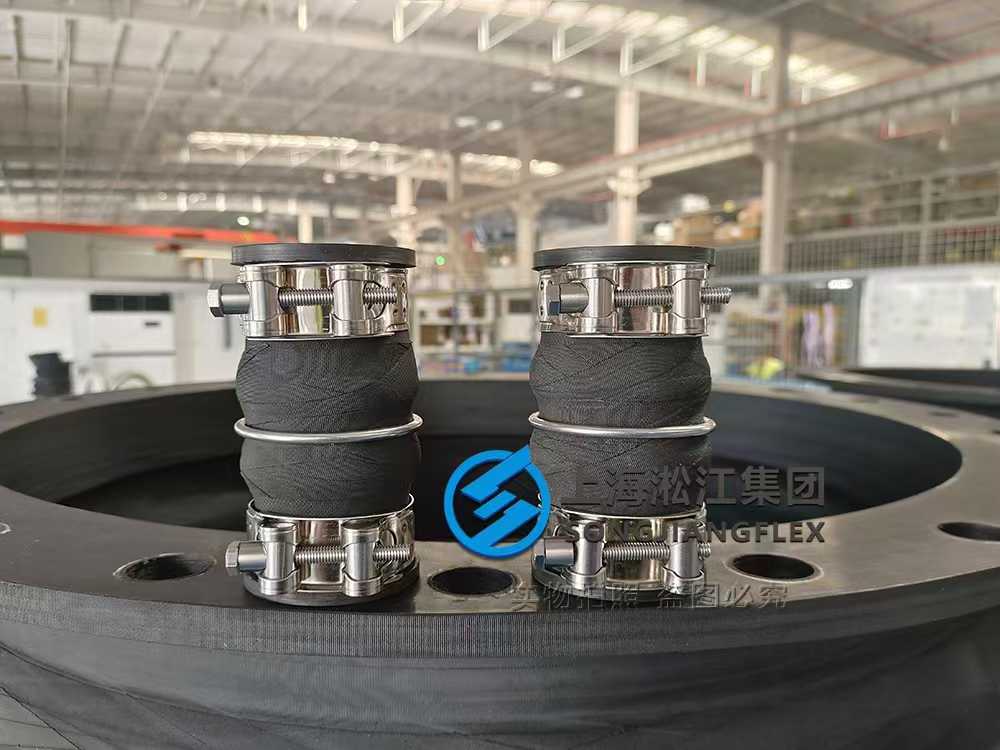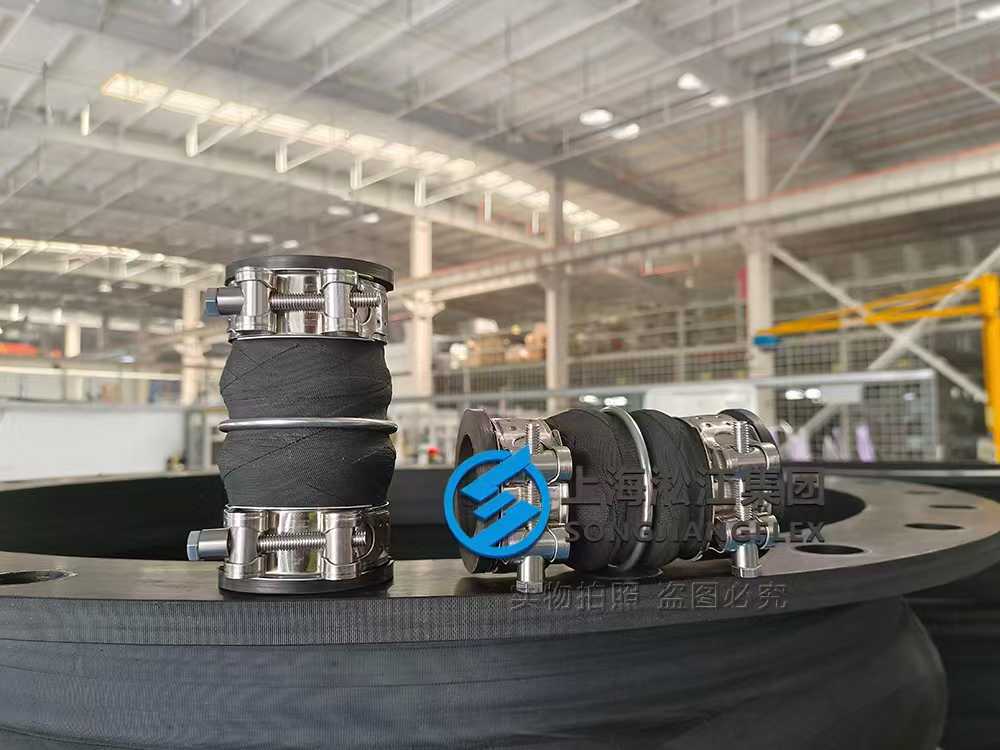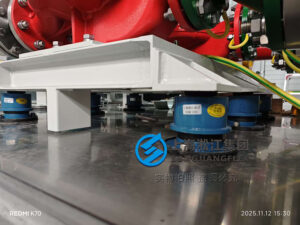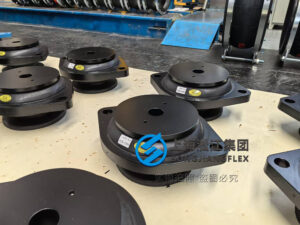High-temperature pipelines crack without flexibility. Our clamp rubber expansion joints absorb heat-induced movement, reduce vibration, and simplify installation—especially in tight or frequently serviced systems.
A high-temperature clamp rubber expansion joint is a flexible connector that absorbs thermal expansion and mechanical vibration in pipelines. With simple clamp installation, it’s ideal for hot fluid and gas systems in HVAC, chemical plants, and boilers. Durable rubber materials like EPDM or Viton handle expansion joints temperatures up to 200°C, making it perfect for demanding environments.
Explore its structure, benefits, installation tips, and how it compares with other types of expansion joints.
What is a High-Temperature Clamp Rubber Expansion Joint?
A high-temperature clamp rubber expansion joint is a flexible pipeline connector designed to handle thermal movement and vibration in high-temperature applications. Unlike flanged models, it uses stainless steel clamps for quick and easy installation.
This expansion joint uses clamps for quick installation. Made of heat-resistant rubber, it absorbs vibration and pipe movement in hot fluid applications.
Clamp-on expansion joints are widely used in thermal oil pipelines, steam lines, and heating systems where frequent maintenance or limited space makes traditional flanged models impractical.
What is a Rubber Expansion Joint?
A rubber expansion joint is a molded, flexible connector used to accommodate movement in piping systems. It absorbs vibration, thermal expansion, and misalignment while providing noise reduction.
A rubber expansion joint is a flexible connector that compensates for thermal expansion, reduces vibration, and isolates noise in piping systems.
Available in various elastomers like EPDM, NBR, and FKM (Viton), rubber joints are commonly used in water, oil, and gas applications.
What is a Thermal Expansion Joint?
A thermal expansion joint is specifically engineered to absorb expansion and contraction caused by temperature changes in pipelines. Both metal and rubber types exist.
A thermal expansion joint absorbs expansion and contraction due to temperature changes. Rubber versions are best for flexible, low-pressure applications.
Thermal expansion joints prevent pipe stress and leaks. The tempflex expansion joint is one such product known for superior flexibility in high-heat systems.
What Are the Three Types of Expansion Joints?
Expansion joints generally fall into three categories: rubber, metal, and fabric. Each has its unique features tailored to specific industrial applications.
The three main types are rubber, metal, and fabric expansion joints. Rubber offers flexibility, metal withstands pressure, and fabric handles gas and ducting.
Clamp type rubber expansion joints are part of the rubber category and are preferred where quick maintenance access and heat resistance are priorities.
What Is the Temperature Range of Rubber Expansion Joints?
The temperature range of rubber expansion joints depends on the rubber material. EPDM typically handles up to 120°C, while FKM (Viton) withstands up to 200°C.
Rubber expansion joints handle temperatures from -40°C to 120°C (EPDM) or up to 200°C (FKM/Viton). Custom options are available for special environments.
For high-performance requirements, tempflex expansion joints made from advanced elastomers provide long-term durability in extreme heat conditions.
What Is the Difference Between Clamp and Flange Expansion Joints?
Clamp-on rubber expansion joints are faster to install and more compact, while flange-type joints offer higher pressure resistance and long-term durability.
Clamp joints are tool-free and space-saving; flange joints are stronger and suitable for permanent, high-pressure installations.
Clamp type rubber expansion joints are especially popular in boiler rooms, heat exchangers, and maintenance-heavy zones where speed matters.
How to Install a Clamp Rubber Expansion Joint?
Installation involves sliding the joint over the pipe ends and tightening stainless steel clamps to ensure a leak-proof seal. It requires no special tools.
Slide over the pipe, align properly, and tighten the clamps evenly. Use two clamps per side for better sealing.
Clamp-on expansion joints are perfect for retrofits or temporary installations where system downtime must be minimized. Ensure alignment to prevent side-loading stress.
How Long Do Rubber Expansion Joints Last?
Typical service life ranges from 5 to 10 years, depending on the operating temperature, pressure, and the medium flowing through the pipeline.
Rubber joints typically last 5–10 years. Life depends on temperature, pressure, and chemical compatibility.
Regular inspection for signs of cracking, delamination, or clamp loosening can help extend service life and prevent unplanned shutdowns.
What Is the Rule of Thumb for Expansion Joints?
A common guideline is to install an expansion joint every 30 meters of pipeline. However, this varies with the material, temperature changes, and pipeline layout.
A common rule of thumb is one expansion joint every 30 meters, adjusted based on material and thermal movement.
For high-temperature environments, reducing the spacing between expansion joints and using flexible connections near elbows or anchors helps prevent damage.
✅ Summary:
Clamp rubber expansion joints simplify high-temp pipe maintenance, offering flexibility, vibration control, and quick installation for HVAC, boilers, and thermal systems.







